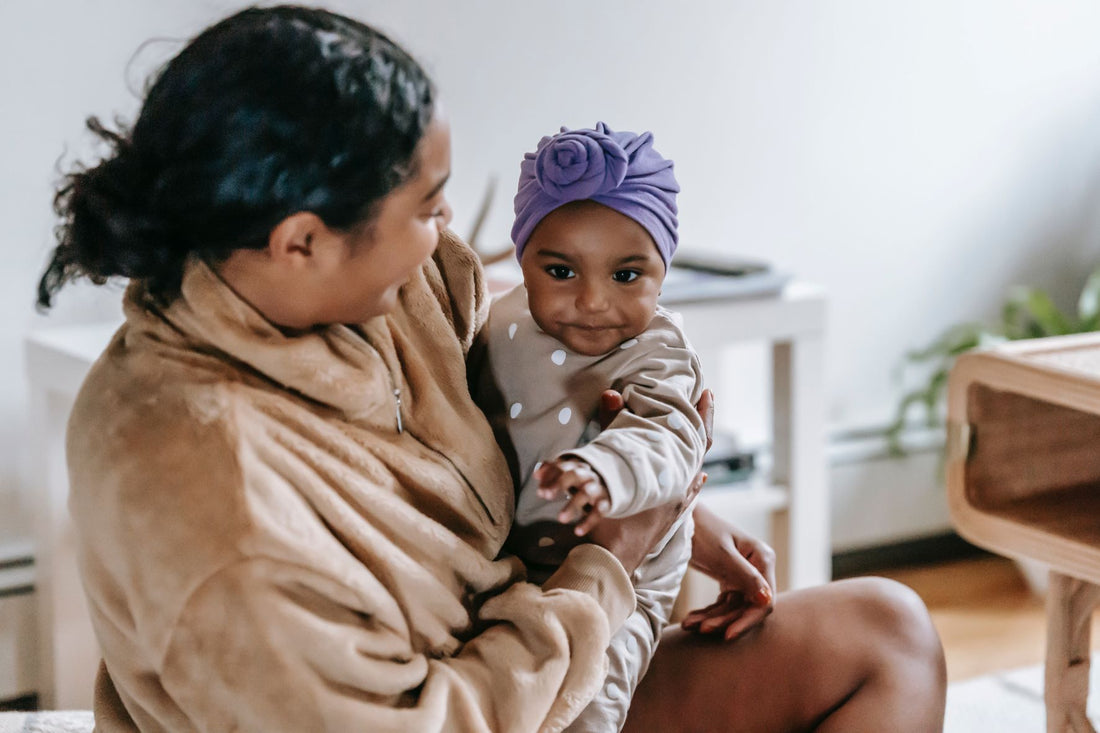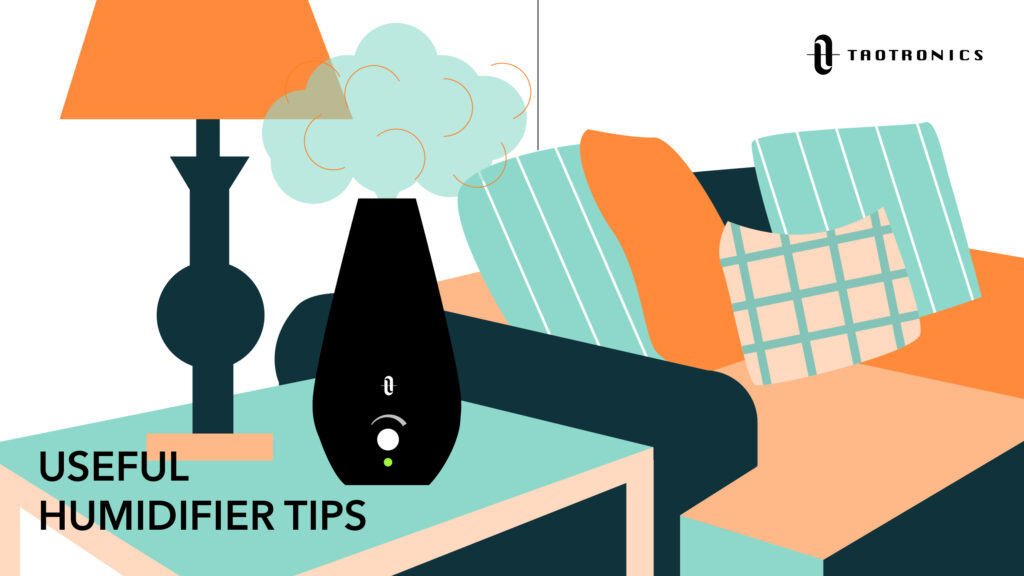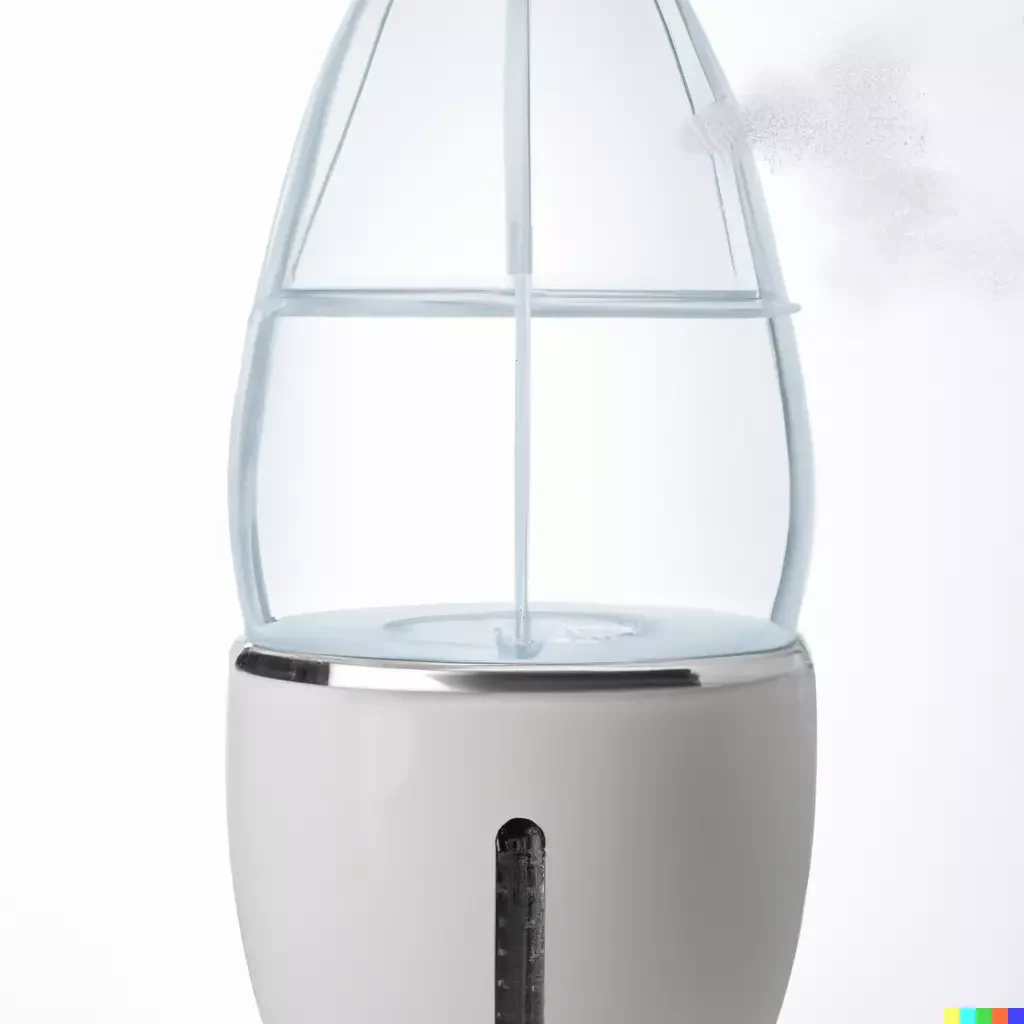A humidifier should be placed at least 3 feet away from a baby’s crib to ensure safety and optimal humidity levels. Never position it directly over or inside the crib.
Ensuring the right humidity levels in a baby’s room helps to soothe tiny airways and can promote better sleep, but the placement of a humidifier is crucial for both effectiveness and safety. A well-placed humidifier can keep the nursery’s air moist without making the bedding damp or posing any risk to your baby.
Parental peace of mind comes from knowing that the device is out of reach, reducing any risk of accidents. Balancing the benefits of a gentle mist with the safety concerns necessitates careful consideration of the humidifier’s location. Always ensure the humidifier is clean and functioning correctly to provide a safe and comfortable environment for your baby’s restful slumber.

Credit: getcanopy.co
The Importance Of Humidifiers For Babies
The Importance of Humidifiers for Babies cannot be overstated. Delicate infant skin and developing respiratory systems benefit greatly from the correct humidity levels. A humidifier in your baby’s room adds moisture to the air. This helps with common nursery issues. Dry air can cause discomfort for your little one. The right humidifier can make a world of difference.
Benefits For Respiratory Health
Babies are sensitive to dry air which can lead to congestion and stuffy noses. A humidifier introduces moisture back into the air. This can ease their breathing. When the air is too dry, babies can become susceptible to infections. Moist air can help keep their respiratory systems healthy.
- Reduces the chances of colds and infections by maintaining healthy mucous membranes
- Can alleviate coughing and congestion when babies are unwell
- Maintains optimal sinus health, preventing nose bleeds caused by dryness
Helping With Sleep Patterns
Good sleep is crucial for baby’s development. A humidifier can improve sleep quality by creating a comfortable sleeping environment. Moist air helps to soothe dry, itchy skin and improves breathing. This can lead to a more restful sleep.
- Creates a consistent sleeping environment with optimal humidity levels
- Eases breathing for uninterrupted sleep
- Helps to prevent dry skin, providing comfort at night

Credit: getcanopy.co
Humidifier Types And Baby Safety
Finding the perfect spot for a humidifier in a baby’s room needs careful thought. Balance is key. Too close could mean trouble; too far and benefits may wane. Safety and health should never take the back seat. In this section, we’ll delve into different humidifiers and how they stack up for baby safety.
Warm Mist Versus Cool Mist
Warm Mist Humidifiers heat water to create steam, which cools before leaving the machine. The warmth offers comfort, particularly during cold months. Keep them out of reach, as they can cause burns if touched.
Cool Mist Humidifiers emit a room-temperature spray. These are generally safer for infants, eliminating burn risks. They cater to all seasons and are ideal for close proximity, around 3 to 5 feet away from the crib.
Features To Consider For Safety
- Auto Shut-Off: This feature turns the humidifier off when the water levels are low, preventing overheating.
- No Sharp Edges: Ensure all parts are baby-friendly, with no sharp points or edges.
- Quiet Operation: A silent model prevents sleep disturbances, prompting restful slumber.
- Easy to Clean: Regular cleaning prevents mold growth, so look for models that dismantle easily.
Remember, choose a model that fits the room size and keep cords out of reach to avoid hazards.
Assessing The Optimal Humidifier Placement
Ensuring the proper humidifier placement is crucial for your baby’s comfort and health. The question, “How close should a humidifier be to a baby?” involves understanding room specifics and achieving the perfect balance for optimal benefits.
Room Size And Humidity Levels
Determining the correct distance between your baby and a humidifier starts with room size. Too close may lead to over-humidification, while too far could render it ineffective.
- For small rooms: Position the humidifier at least 3 feet away from the crib.
- For larger areas: Increased distance helps distribute moisture evenly.
Monitor humidity levels carefully. Ideal room humidity should range from 40-60%. Hygrometers measure these levels to ensure the environment stays balanced.
Strategic Positioning For Effective Use
Find the sweet spot where the humidifier operates effectively without exposing your baby to any risks.
| Position | Benefits |
|---|---|
| On a stable surface | Prevents tipping over |
| Away from direct contact | Prevents dampness on child |
| Near airflow | Encourages even humidity distribution |
Keep the unit out of reach to maintain safety. This strategic positioning maximizes benefits and minimizes potential hazards.
Safe Distances: Protecting Your Baby’s Health
Holding your little one close is a feeling like no other. But when it comes to the use of humidifiers, setting the right distance is key to your baby’s health and safety. Ensuring the proper placement of a humidifier in the nursery keeps the air ideal – moist enough for comfort, but far away to avoid any potential risks.
Recommended Minimum Distance
Experts suggest keeping a safe distance between the humidifier and your baby’s crib or bed. This is not just to prevent any direct contact with moisture but to ensure an even distribution of humidity in the room. A minimum of 3 feet (about one meter) is a rule of thumb to start with. Let’s consider how room size and humidifier type might adjust these guidelines:
- Small rooms: Increase distance if the room is small, to prevent excessive humidity.
- Larger areas: A bit closer may still be safe, as moisture disperses over a wider area.
- Type of humidifier: Ultrasonic models can be placed slightly further away compared to evaporative ones.
Factors Affecting Safety Distance
Several factors play into the safe distance for a humidifier in a nursery. Here’s to keep in mind:
| Factor | Description | Impact on Distance |
|---|---|---|
| Room Ventilation | Better ventilation allows for closer proximity. | Decreases required distance |
| Humidifier Output | Higher output models should be placed further away. | Increases required distance |
| Baby’s Mobility | Crawling or walking increases risk of reaching the device. | Increases required distance |
| Noise Level | Noisier humidifiers may disturb sleep if too close. | May increase required distance |
Account for these factors to maintain the perfect balance between humidity levels and your baby’s comfort and safety.
Maintenance Tips For Baby’s Humidifier
Keeping a humidifier clean is crucial, especially in a baby’s room. Dust, mold, and bacteria can grow inside a humidifier. This guide gives tips to maintain a humidifier. This ensures the air stays safe and moist for your infant’s comfort.
Regular Cleaning Routines
Set a cleaning schedule for the humidifier. Follow the maker’s guide. Some models need daily cleaning, while others may need less frequent care.
- Unplug the humidifier before cleaning.
- Empty all water after each use.
- Clean every part with soap and water.
- Rinse well to avoid soap residue.
- Dry completely before the next use.
- Use distilled water if possible to reduce mineral buildup.
- Change filters or clean them as the manufacturer suggests.
When To Change The Water
Always use fresh water to prevent mold and bacteria growth. Fill the humidifier with new water before each use.
| Type of Humidifier | When to Change the Water |
|---|---|
| Cool Mist | Every day before use |
| Warm Mist | Every day before use |
| Ultrasonic | Every day before use |
Water left in a humidifier becomes a breeding ground for germs. It can affect your baby’s health. Thus, diligence with water changes is key.
Monitoring And Adjusting Humidity Levels
Keeping the air just right in a baby’s room is key for their comfort and health. The perfect humidity level can make all the difference. But how does one ensure these levels are safe and comfy for the little one?
Using a HygrometerUsing A Hygrometer
A hygrometer is a handy tool. It tells you about moisture in the air. You’ll always know if adjustments are needed. Check the numbers often. Keep them in the ideal range. This range is between 30% and 50%.
Signs of Excessive HumiditySigns Of Excessive Humidity
Too much humidity is not good. It can be a playground for mold and mildew. Keep an eye out for:
- Condensation on windows
- Damp spots or water stains
- A constant musty smell
If you see any of these signs, act fast! Reduce the moisture. Keep the baby’s room fresh and safe.
Credit: www.businessinsider.com
Frequently Asked Questions For How Close Should Humidifier Be To Baby
How Far Away Should A Humidifier Be From Baby?
Place the humidifier at least 3 feet away from the baby’s crib to ensure safety and proper humidity distribution. Keep it out of the child’s reach and direct airflow away from them.
Is It Ok To Leave Humidifier On All Night For Baby?
Yes, using a humidifier all night for a baby is generally safe, provided you maintain a moderate humidity level and keep it clean to prevent mold or bacteria growth.
What Happens If Humidifier Is Too Close To Baby?
Placing a humidifier too close to a baby can lead to over-humidification, potentially causing respiratory issues or mold growth. Always maintain a safe distance as recommended by the manufacturer.
Can Humidifier Be Too High For Baby?
Yes, a humidifier can be too high for a baby, leading to respiratory issues or mold growth. Maintain humidity levels between 30-50% for safety and comfort.
Conclusion
Ensuring your baby’s comfort and safety is paramount when using a humidifier. The ideal distance is between 3 to 5 feet, avoiding direct mist on your little one. Regular cleaning and proper placement can promote a healthy nursery environment. Trust these guidelines to maintain optimal humidity for your child’s well-being.





